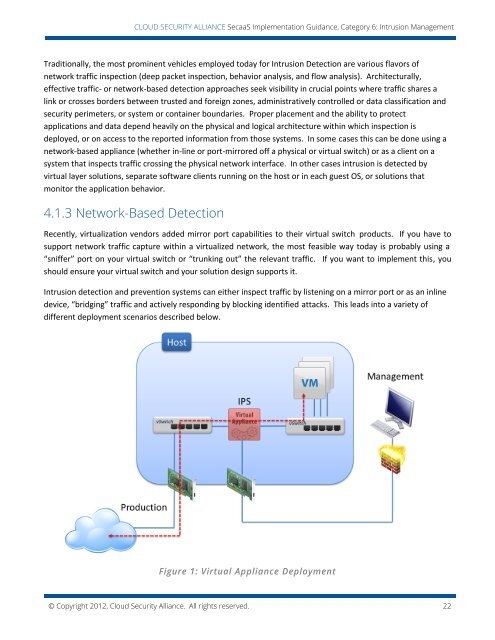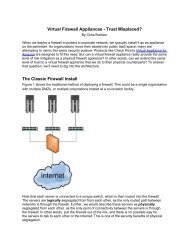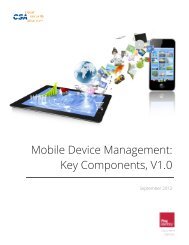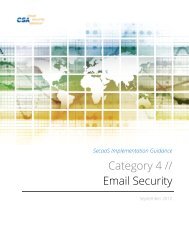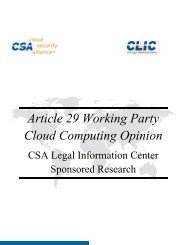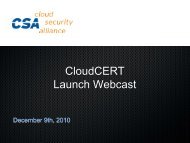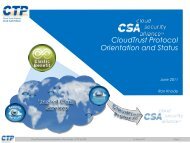Download - Cloud Security Alliance
Download - Cloud Security Alliance
Download - Cloud Security Alliance
- No tags were found...
Create successful ePaper yourself
Turn your PDF publications into a flip-book with our unique Google optimized e-Paper software.
CLOUD SECURITY ALLIANCE SecaaS Implementation Guidance, Category 6: Intrusion ManagementTraditionally, the most prominent vehicles employed today for Intrusion Detection are various flavors ofnetwork traffic inspection (deep packet inspection, behavior analysis, and flow analysis). Architecturally,effective traffic- or network-based detection approaches seek visibility in crucial points where traffic shares alink or crosses borders between trusted and foreign zones, administratively controlled or data classification andsecurity perimeters, or system or container boundaries. Proper placement and the ability to protectapplications and data depend heavily on the physical and logical architecture within which inspection isdeployed, or on access to the reported information from those systems. In some cases this can be done using anetwork-based appliance (whether in-line or port-mirrored off a physical or virtual switch) or as a client on asystem that inspects traffic crossing the physical network interface. In other cases intrusion is detected byvirtual layer solutions, separate software clients running on the host or in each guest OS, or solutions thatmonitor the application behavior.4.1.3 Network-Based DetectionRecently, virtualization vendors added mirror port capabilities to their virtual switch products. If you have tosupport network traffic capture within a virtualized network, the most feasible way today is probably using a“sniffer” port on your virtual switch or “trunking out” the relevant traffic. If you want to implement this, youshould ensure your virtual switch and your solution design supports it.Intrusion detection and prevention systems can either inspect traffic by listening on a mirror port or as an inlinedevice, “bridging” traffic and actively responding by blocking identified attacks. This leads into a variety ofdifferent deployment scenarios described below.Figure 1: Virtual Appliance Deployment© Copyright 2012, <strong>Cloud</strong> <strong>Security</strong> <strong>Alliance</strong>. All rights reserved. 22


